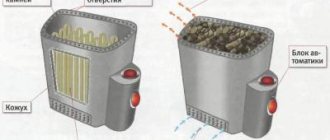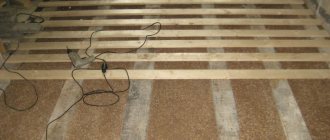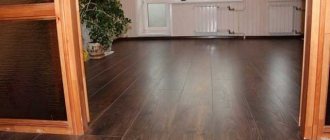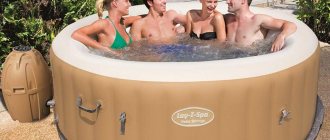The service life of a fireplace or stove largely depends on how and with what exactly the chimney is sealed using stainless steel or other materials.
Correct installation does not guarantee the absence of problems with combustion products entering the room. Over time, pipe materials are subject to thermal deformation, which leads to ruptures and cracks in the structure.
This leads to a decrease in draft, as a result of which a large volume of combustible material is required to heat the house, and because of this, soot intensively settles on the inner surface of the pipe. The latter is especially dangerous, as it not only leads to the formation of condensation, but can also cause a pipe fire.
For this reason, for the stable functioning of a chimney made of stainless steel or any other materials, it must be regularly inspected and any deficiencies that may arise must be promptly corrected. To avoid problems in the future, it is better to seal all cracks and joints to avoid defects.
The construction market offers a wide range of sealing agents: based on silicone, bitumen, silicate and acrylic. The entire wealth of choice is conventionally divided into heat-resistant and heat-resistant sealing agents, although, of course, there are many more varieties.
Types of sealant for stainless steel chimneys
By sealing the cracks of stove or fireplace pipes, combustion products will not enter the room through them. Reliable insulation makes using a stove, fireplace or boiler as safe as possible.
Watch video - high-temperature products for stainless steel and other materials
Review of high-temperature sealants: which are not suitable for joining chimneys, and which are suitable
All sealing agents can be divided into several types:
- based on silicone or silicate;
- by composition: one-component or two-component;
- according to temperature characteristics: temperature-resistant sealants and heat-resistant.
As the name suggests, one-part sealants consist of a single component and do not require mixing of ingredients before sealing. This makes them easy to use and popular with home owners who appreciate the ease of use of the insulation product.
Two-component ones must be mixed before starting work, strictly observing the proportions specified in the instructions. In this case, the finished product should be used within several hours after mixing. This option is not suitable for sealing joints with your own hands; professional builders usually use two-component insulation.
In addition to chimney insulation, sealing compounds are also used to insulate the seams of a heating system structure based on an electric boiler when eliminating pipe leaks.
What means are used to create a tight connection?
Special polymer-based compounds have been developed for sealing chimneys, stoves and fireplace inserts. Temperature sealants have a gel-like, fluid consistency, which allows them to flow into the smallest cavities, joints, and cracks. They differ in composition and have different operating temperature limits. Most are produced in special cylinders compatible with the mounting gun.
Note! The uniqueness of sealing compounds for furnaces is that, in addition to their resistance to high temperatures, they are not destroyed by repeated, significant changes in temperature - from -60 to +250 and above.
Sealants for heating systems differ in several parameters:
- according to the constituent components - there are two and one component;
- according to acidity level – acidic and neutral;
- in relation to temperature effects - divided into heat-resistant (low-temperature) and heat-resistant (high-temperature);
- by consistency - gels, pastes.
We recommend reading: Why heating pipes in an apartment make noise or hum, and how to fix it
Single-component formulations are sold in one bottle. They are ready to use and do not require additional preparation. These insulating compounds are popular among craftsmen. Their use does not require specific knowledge or skills. When applied to a surface, they harden at room temperature for a certain time.
Two-component heat-resistant sealants consist of two substances, each of which is placed in a separate container. The basis is a polymer; the addition is a catalyst that promotes the solidification of this polymer. Before use, a two-component insulator is prepared by mixing the ingredients. Violation of the proportions or technology of preparing the mixture leads to loss of sealing qualities. The finished mixture has virtually no shelf life. It should be used for a short period of time.
Note! Difficulties in preparing two-component compositions for work lead to the fact that non-specialists do not risk using them. Such sealants are used by professional stove makers and builders.
Heat-resistant compositions include those whose upper limit is limited to 150-250 degrees. They are intended for the external walls of stoves, fireplaces, and brick chimneys.
Heat-resistant or high-temperature sealants are called sealants, the resistance of which reaches a value of 1500 degrees. These compounds can be used not only for the inside of steel pipes, but also in open fire zones - to seal seams and burnouts in a fireplace or stove insert.
Note! A special group consists of polymer adhesives and sealants of the MS brand. These are high-strength polyurethane compounds that can withstand temperatures up to 200 degrees, do not collapse under the influence of ultraviolet radiation, atmospheric influences, retain elasticity, and have increased adhesion to the surfaces being connected.
Polymer adhesives-sealants are rapidly gaining popularity in the construction, industrial (including machine-building) segment of European countries.
In everyday life, for gas and electric stoves, adhesive-sealant type Dow Corning Q3 - 1566 is used.
We recommend that you read: How to choose and install a chimney pipe for a bathhouse?
Silicone sealants for structures made of stainless steel, glass and other materials
When wondering how to seal a chimney made of stainless steel, glass, plastic or ceramics, you should pay attention to fireproof silicone. This material promotes close contact of structural parts with each other and reliable insulation. The main advantages of silicone composition:
- thanks to elasticity, the quality of contact is maintained for a long time, even when, due to high temperatures, structural elements are deformed and change position relative to each other;
- after completion of the polymerization process, the material becomes very durable;
- silicone is absolutely waterproof;
- the material has a high degree of resistance to ultraviolet radiation and other weather conditions;
- Silicone is characterized by high thermal and heat resistance.
Silicone sealants come in two types:
- Acidic. They release acetic acid during hardening, which can damage the pipe or roofing. Such a remedy will definitely not help in solving the problem than sealing a chimney made of stainless steel or a material of natural origin: cement, stone or concrete, as it can contribute to the formation of corrosion of metal elements, destruction of the areas of the pipe and roof in contact with it.
- Neutral insulation products, unlike acidic ones, release water and alcohols into the environment when they harden. This is a suitable sealant for stainless steel chimneys.
An additional advantage of silicone-based products is that as a result of heating, the iron oxide contained in it turns brown, which makes the insulation more invisible against the background of a roof or brickwork.
Heat-resistant and heat-resistant sealants: what are the differences?
According to their temperature characteristics, insulation products are divided into heat-resistant and heat-resistant. They are used to seal joints between different sections of a structure, as they can withstand different temperatures. If heat-resistant ones are only suitable for external surfaces, then heat-resistant ones can seal the cracks of a high-temperature chimney, where temperatures are especially high.
Heat-resistant adhesive for sealing: scope of application, characteristics
This type of insulation is suitable for working with external walls of a fireplace, stove, as well as for processing the junction of brickwork and roofing.
It should not be used for stainless steel pipes, since it has a rather low heating temperature - only 350°C.
Heat-resistant sealant is made from silicone. The temperature range at which a product can be used is affected by the additional components present in the product and their percentages. The most common additional component is iron oxide, which gives the insulation a brown tint.
The main characteristics of this type are as follows:
- high elasticity of the thermosealant: due to its resistance to deformation, silicone can be used for insulation on pipe sections of rather complex shape. It will easily cope with the task and will not crack under the influence of temperature;
- the average temperature range of heat-resistant silicone ranges from +250°C to +320°C;
- resistance to ultraviolet radiation: insulation can be used to seal external structural elements;
- silicone does not allow moisture to pass through, which also makes it convenient for outdoor use. Rain and snow are not scary for him;
- high adhesion allows the silicone composition to adhere perfectly to a variety of types of surfaces: brick, metal or ceramics.
Silicone has few disadvantages, but they still exist:
- due to its low heat resistance, it is not suitable for sealing internal surfaces that directly interact with fire;
- Since the material is elastic, it cannot be painted. The paint will not remain on its surface for a long time.
The rate of hardening of heat-resistant insulating material depends on the temperature at which the work takes place. At low temperatures and high humidity, the composition will take longer than indicated on the package. In dry air and high temperature it will harden faster. The insulation also adheres better to a dry surface.
Features of heat-resistant sealants
Heat-resistant or low-temperature sealants are produced on a silicone basis. Their scope of application is limited to the external surfaces of stoves, fireplaces and brick chimneys. For application inside, these products are not heat-resistant enough, and for steel pipes they are aggressive because they have an acidic component.
The peculiarity of their use is also in the thickness of the layer applied. For each product, the manufacturer indicates the optimal application thickness. Don't neglect these recommendations to get a reliable connection.
Note! To harden, the heat-resistant insulator uses moisture from the surrounding air. With an increased thickness of the applied product, its inner layers will not be able to harden sufficiently.
Distinctive qualities of heat-resistant sealants for chimneys:
- The silicone base contains iron oxide, which gives the product a brown color.
- When applied, there is often a vinegar smell as the acid base evaporates.
- Neutral low-temperature insulators release alcohol and water when they harden, rather than acid. Such products can be used to insulate iron elements of chimneys or roofs. An example of such an insulator is PENOSIL Premium High Temp Sealant from the international brand Wolf Group.
- Silicone chimney sealants have good adhesion to different surfaces. They adhere equally well to mortar, brick, ceramics, glass, and soft roofing materials.
- Maintaining high elasticity during hardening makes it possible to maintain the tightness of connections during thermal expansion-compression of materials, under vibration loads of open segments of the chimney.
Moisture resistance and ultraviolet resistance make these materials indispensable for sealing the external elements of the chimney and roof penetration.
Note! It is not advisable to use low-temperature sealants to seal deep chimney cracks. There, the layer thickness will exceed the recommended parameters, not allowing the inner layers to harden sufficiently.
Low-temperature insulators have proven themselves well among motorists. However, when choosing a car repair product, you should pay attention to the acidity level of the paste. Belife Silicone sealants have proven themselves to be excellent for metal elements.
We recommend that you familiarize yourself with: Types and characteristic features of plugs for profile pipes
Heat-resistant sealant: for which structures it is suitable, pros and cons
A heat-resistant insulating agent is a better option than caulking the joints of a metal and stainless steel chimney. This is explained by the fact that silicate, which is the main component in the refractory composition, perfectly withstands high temperatures up to 1200-1300°C, and under short-term load – up to 1600°C.
Watch the video – stainless steel versus galvanization
5 years of operation of chimneys: stainless steel versus galvanized. Zhukhlo will prove (c)
The silicate composition is suitable for sealing cracks in fireplaces and stoves where there is direct contact with fire. Typically, high temperature insulation material is gray or black.
The main advantages of fire-resistant silicate:
- the chemical inertness of the product allows it to be used for structures made of any material, since it does not react with it;
- silicate insulation is resistant to sunlight and precipitation, it can be safely used to treat areas of the chimney located in the open air;
- The top layer becomes porous after drying, making it easy to paint.
Minuses:
- upon completion of the polymerization process, the product becomes rigid: the slightest vibration or “walking” of structural elements can lead to cracks. Therefore, it is not used for pipes made of materials prone to significant temperature deformation. Only cracks should be sealed with a silicate compound, since when treating the chimney elbow, problems may arise in the future with its disassembly for cleaning;
- silicate products have rather low adhesion: the composition will not last long if the sealing area is not treated with a special composition before applying it;
- silicate-based sealant can only be applied at temperatures above 20°C and humidity not lower than standard levels. If these conditions are not met, the seam will take much longer to set.
Although all silicate heat sealants can withstand high temperatures, in order to seal those areas that will come into contact with the flame, it is better to use only non-flammable sealants labeled “fireproof”.
You should not apply silicate sealant in several layers to increase its wear resistance: this way it will not be able to dry out and will become covered with cracks. The required width and depth of application are indicated in the instructions. The silicate product adheres better to a damp surface, so before starting work it is better to slightly moisten the area where you plan to apply it.
Thermal tape and hot melt adhesive
Along with liquid sealants, there is a very convenient tool that allows you to seal the joints of pipes made of materials such as plastic and metal (stainless steel) - thermal tape. Thermal tape is excellent insulation for a chimney. You just need to wrap it around the joint and heat the material. Since this is a self-shrinking sealant, when exposed to temperature, the product will shrink and tightly grip the pipe joint.
Another way to seal joints and cracks is with heat-resistant adhesive and sealant. Insulation adhesive can be made from materials such as acrylic, silicone or polyurethane. The composition allows not only to seal seams, but also to reliably glue the surfaces of materials together. The adhesive has excellent waterproofing properties and has good adhesion to natural materials and concrete.
How to properly seal?
Most often, difficulties are caused by the heat and waterproofing of the fireplace, or more precisely, by leading the stainless steel pipe through the roof and sealing the joints between them.
This is important not only for high-quality pipe insulation, but also to ensure that the roof does not leak. The place where the pipe connects to the roof is called the chimney outlet. This is a key part of the entire structure that must be carefully sealed. The durability of the roof and the quality of the heating system depend on its reliability.
Most modern roofing materials, in addition to the main elements, have special parts made of non-flammable compounds, with which you can surround the chimney as tightly as possible with a coating and prevent heating of the roof from a hot chimney and possible fire. Thus, insulation also performs fire protection functions.
Even if the house does not have a fireplace or stove, and it is heated using a boiler, there is still a need to purchase a sealant for the boiler to ensure good draft and stable operation of the heating device.
Most sealing compounds are packaged in cartridges or tubes with a sharp tip, which must be cut at an angle of 45° before starting work. It is important to make a hole of the same diameter as the future seam.
Squeeze out the sealant using a standard construction gun, applying it evenly to the desired areas of the chimney. If a collapsible stainless steel chimney pipe is being treated, then the composition is applied only to the joints, so that in the future it can be easily cleaned and the elements can be disassembled for cleaning.
There are several simple rules for working with sealants:
- It is not recommended to seal pipes and other structural elements at temperatures below +5°C;
- You only need to work with gloves; if the sealant gets on your skin, immediately rinse the area with running water;
- the insulation composition requires at least a day to dry completely;
- Upon completion of the work, you should light the stove or light the fireplace to check the quality of the work performed.
The sealing compound should be used as follows:
- Clean the surface where the sealant will be applied;
- If the composition is heat-resistant, then it is better to treat the area with abrasive to increase adhesion. If the surface is made of brick, you can make several scratches on it for this purpose;
- The application area is degreased and dried (naturally or with a hair dryer). Drying is necessary only for silicone-based compounds; to apply heat-resistant ones, on the contrary, the surface must be moistened.
Next, cracks, crevices and joints are sealed: the work must be done strictly with gloves, observing the thickness and width of the seam specified in the instructions. It is important to ensure air access to the place where the composition is applied: this is necessary for its proper hardening.
Sealing the chimney with cement
If for modern finishing materials there are sealants made of silicone and silicate, then to seal a slate roof, a method known to our grandfathers is suitable - a mixture based on asbestos and cement.
The chimney is sealed with cement as follows:
- First prepare a mixture of cement and asbestos in a 1:1 ratio. It is better to use fluffed asbestos, but you can also tear sheet asbestos into small pieces;
- the asbestos is then mixed with water and allowed to swell until it becomes a homogeneous mass;
- swollen asbestos is mixed with cement;
- the resulting cement composition coats the gap between the pipe and the roof;
- then you need to wait for the solution to dry completely, and you can light the stove.
What factors influence the choice of sealing agent?
When choosing a suitable product for hydro- and thermal insulation, they are guided by the conditions under which the stove, fireplace or heating boiler will be used. It is also important to consider where exactly the product will be applied: inside the pipe, outside or at the junction of the chimney and roof. The choice of sealant is also influenced by the heating temperature of the surface that is planned to be treated.
Watch the video - a stainless steel pipe after 2 years of operation (external galvanized and internal stainless steel)
Chimney after 2 years of operation
However, in any case, it is worth following general recommendations that are true in all cases:
- elastic means are better suited for hard-to-reach areas and joints subject to thermal deformation;
- solid sealants are suitable for cracks and brickwork;
- sealants containing iron oxide acquire a brown tint, which camouflages them well against the background of brick;
- To seal a chimney made of metal, stainless steel or natural stone, brick, you should not use acidic compounds that can damage the surface of the chimney of boilers or stove heating.
You shouldn’t skimp on chimney sealant, because forced regular cleanings, as well as the need to re-disassemble the structure, will bring much more costs, and you won’t be able to save money. In addition, poor-quality sealant can lead to soot getting into living spaces, the formation of plaque on the walls, poisoning of residents, or even a fire.
Types of high temperature sealants
Depending on the nature of the defect and the location of sealing, compositions for furnaces are divided into the following types:
- silicate heat-resistant sealants that can withstand temperatures up to +1500 °C without destruction;
- silicone-based pastes with a maximum temperature threshold of +250 °C (short-term - up to 350 °C);
- special glues and mastics designed for heating up to 1000 °C;
- adhesive mixtures for external cladding of heating stoves and fireplaces with tiles, heat resistance limit – 800 °C.
Important point. Do not confuse oven sealants with oil-resistant silicone pastes used to seal joints in automobile engines. Red motor compounds are sold in tubes and have a strong vinegar smell. They can be used to seal threaded connections of water heating systems.
Oven sealants also do not include fire-resistant paints or liquid insulation. The purpose of materials in this category is to protect the surfaces of building structures from fire and destruction in a fire. The maximum fire resistance limit of such coatings is 2 hours when in contact with an open flame.
Red car silicone seals are not heat resistant and are not used by stove makers
So that you can choose the appropriate type of sealing paste, we suggest looking at each type using specific examples.
Heat-resistant pastes
Fire-resistant sealant of this type is a black viscous substance made on the basis of sodium silicate with the following characteristics:
- operating temperature range – from minus 40 to +1500 °C;
- release form - plastic tubes-cartridges inserted into a mounting gun;
- hardens within 10-15 minutes;
- the hardened mass is inelastic and can deform by a maximum of 7% without destruction;
- applied at positive air temperatures - from 1 to 40 ° C (more precisely indicated on the tube of a particular product);
The black color of the heat-resistant material is visible from the bottom end of the tube - adheres well to rough and smooth surfaces - stainless steel, galvanized steel, ferrous metal, brick;
- price for a 310 ml tube - 6-9 USD. e. depending on the manufacturer.
Reference. Judging by reviews from homeowners, the most famous heat-resistant sealants are Penosil 1500 Sealant (manufacturing country Estonia) and Soudal (Belgium). It is not difficult to find cheaper analogues on sale.
Heat-resistant paste gives excellent results when sealing joints of fixed surfaces that have approximately the same coefficient of thermal expansion:
- cracks in the stove and fireplace masonry;
- through cracks in chimneys made of brick or metal, where outside air is sucked in;
- leaky welds on steel boilers;
- cracked sections of cast iron heat generators (does not always help).
Also, black paste sealants are used as a sealant between the masonry of a stove or fireplace and fittings - doors, views, ovens, and so on. A prerequisite is the laying of a damper tape (for example, an asbestos cord), which compensates for the thermal expansion of the metal. Otherwise, the frozen mass will crumble.
The fallen brick can be placed on heat-resistant paste. Complete solidification of the mass occurs after heating the oven.
How to use heat-resistant sealant correctly:
- The minimum width of a crack or gap between elements is 5 mm. Thick paste will not fit into a narrower gap.
- Elimination of defects in a stove or boiler firebox is carried out “cold”. Fistulas in the chimney can be repaired “hotly”.
- Surfaces are cleaned of dust and degreased as far as work conditions allow.
- The substance is applied with a construction gun.
An example of applying the Soudal composition to the opening before installing the door.
When using some compositions (for example, Soudal), the manufacturer recommends lightly moistening the surfaces with water. Wear rubber gloves - the sealant has high adhesion to various materials, making it difficult to wash your hands.
Silicone seals
One-component heat-resistant silicone with various additives can withstand heating up to 250-285 °C, short-term - no more than 315 °C. Common brands are Penosil, Tytan (Titan), Germent. In the stove industry, sealant is used for a chimney whose surface is not too hot, for example, connected to a gas boiler.
For reference. The temperature of the chimney pipe of conventional gas boilers rarely reaches 120 °C, and that of condensing boilers - 100 °C. The flue of a fireplace, brick stove or solid fuel boiler heats up to an average of 150-200 °C, a sauna heater - up to 300 °C. This refers to the inner walls of the channel, the outer walls are much colder.
A semi-liquid silicone mass of red (sometimes blue) color, after hardening, forms an elastic barrier that can stretch and contract by 100% (2 times). The characteristics of heat-resistant silicone-based sealants look like this:
- operating temperature – from minus 40 to plus 250 °C;
- packaging – 310 ml pistol cartridges;
- hardening time – 20 minutes;
- adhesion to any smooth surfaces - glass, metal, ceramics and the like;
- applied “cold” at ambient temperature plus 5-40 degrees;
- UV resistant;
- joint width and depth – 6 mm or more;
- the cost of packaging 310 ml is from 3 to 7 USD. e.
In addition to the external sealing of cracks in brick chimneys, silicone paste can be used for external sealing of sandwich chimneys during the installation process. Sealant cannot be used in very hot furnaces of boilers and fireplaces.
Important advice. Silicone is applied directly to the joint of the sandwich modules when the chimney is not planned to be disassembled in the future. Although the mass is elastic, it will not be possible to separate the sections after processing - you will have to cut them with a grinder. It is better to apply the composition after assembly directly to the joint - where the end of the “mother” rests against the side of the “father”.
Adhesive facing compositions
When installing stove doors, dampers and ovens inside the brickwork, a fire-resistant sealant is used - graphite-asbestos cord. To prevent it from moving or falling out during installation, we suggest fixing it with a special glue shown in the photo. The substance “holds” a temperature of up to 1100 ° C and sets within 10-20 minutes.
If the masonry of a stove or fireplace is covered with small cracks affecting the bricks, it is unrealistic to seal them with heat-resistant sealant - the defects are too narrow and deep. In this case, one of the heat-resistant facing compositions will help:
- one-component tile adhesive with the addition of fire-resistant mineral fillers, temperature threshold – 800 °C;
- special mastics for gluing tiles and stone with a heat resistance limit of +1000 °C;
- adhesive mixtures based on chamotte and kaolin dust that can withstand heating up to +400 °C.
The point of using adhesives and mastics is as follows: all small cracks are closed by processing and finishing the walls of the oven with tiles or tiles. After repair, the fireplace is not only sealed, but also acquires a wonderful appearance.
Important! Before covering the stove, it is necessary to eliminate the cause of the cracks, otherwise the new design will quickly deteriorate or fall off. Adhesive mixtures and compositions do not have mobility and elasticity.
The technology for applying mastics, the thickness of the layer and the hardening time of the adhesive sealant are necessarily described in the instructions on the packaging. Surface preparation is done in approximately the same way - clay, paint and dust are removed, masonry joints are cleared. Then priming is done with a deep-penetrating compound (of the same brand). Fireclay adhesive mixtures are sold in bags, mastics are sold in plastic buckets of 5-15 kg.











